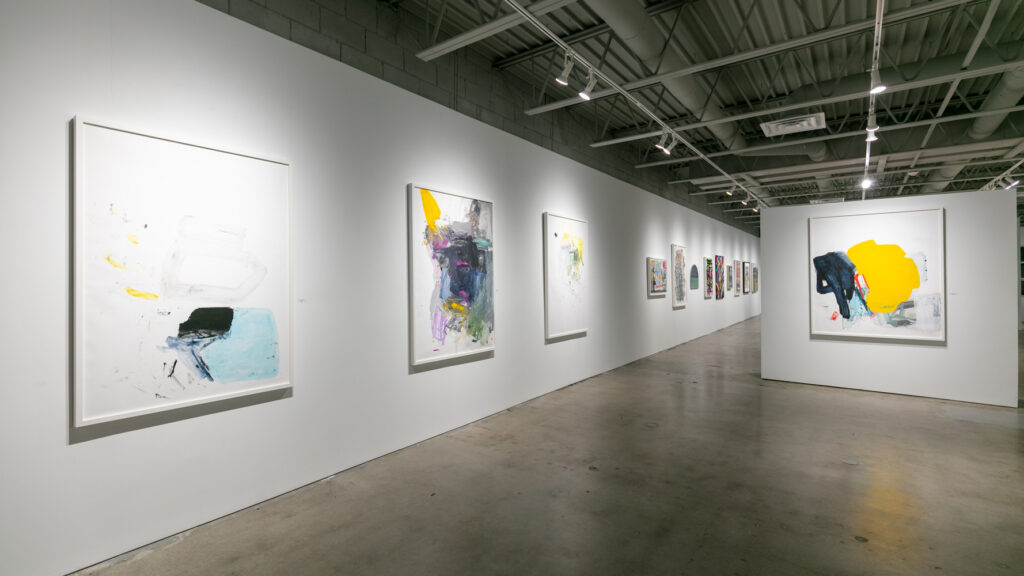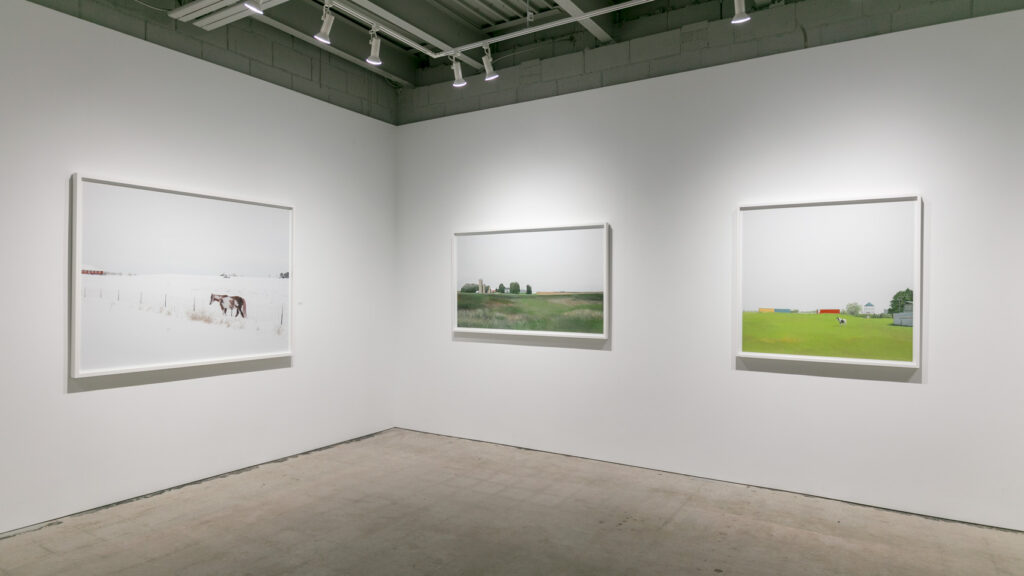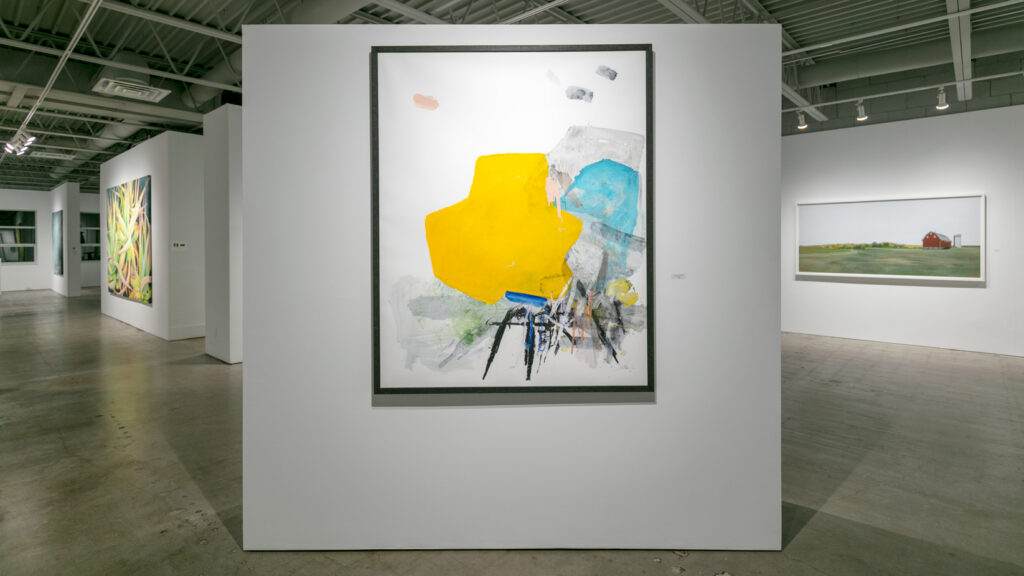Reverie: a state of being pleasantly lost in one’s thoughts
Eclogue: a short poem; a pastoral dialogue
Moberg Gallery presents Teo Nguyen’s “Eclogues & Random Reveries,” a show composed of landscapes and abstract paintings.
We are greeted by abstractions first, so called Random Reveries, which hint at a general state of mind or a state of bliss that comes naturally to any creative endeavor. They are defined by an expanse of acrylic paint that emerges from the white support that backs it. That’s the initial take, at least; efforts that murmur forward like an entity coming into view, observable through a window to add an extra layer of distance. However, a shift in perspective feels more to the point. Rather than viewed straight ahead, these works benefit from a top-down point of view. When read like a topological study, the marks materialize into evidence. Vellum, a ground in the literal sense, allows washes, scratches, and blocks of color to accumulate like structures made out along the X,Y, and Z axis.
Structures, in this context, may be more poetically put as syllables. Not poems or pictures in their own right, but allusions to images yet to come. Consider “Random Reverie 225.24b,” noteworthy for the solid yellow mass at its center. It is a sore spot. A potently charged roof under which static electricity bristles out as white, blue, and black bolts along the southern border. These bolts are but pinpricks of paint, really. Synapses that sound off from a brain, a brain that acts as both a container and an outlet.
Note the repetition of colors and the naming conventions from piece to piece. Each reverie may be random, sure, but they are catalogued in such a way that relationships begin to form between them. Single frames collectively move together with the frenetic quality of an UPA animated sequence. The yellow honeycomb in one piece bows to a crescent within another and, eventually, twists into isolated strips elsewhere before, finally, it culminates to noise.
The mind, just like paint, wanders; so too does the eye. It isn’t long before the path of reverie finds a road from nonobjective plains to a healthy variety of Midwestern views. Eclogues, as they are called. A storied genre and, in Teo’s hands, a call for dialogue that harnesses syllables prior to articulate the interplay between spirited mankind and the spirit of the world.
Let us dial into one such view. “Eclogue 20.9.” There’s a stark contrast between the natural scene and the man-made objects that occupy it. See the marks that layer into coniferous trees, or the flicks of color that populate the grassland? How about the solid blocks of fire engine red, mustard yellow, and blue grey that compose container, shed, and barn? The masterful distinction between man’s mark on the land and nature’s supple canvas hold true even with the added presence of the horse. It peers behind, out of the scene and through to the gallery, yet does so with the same sturdy flatness of the items nearby, as if to signal that it and the constructs elsewhere are made of the same stuff, like a cautionary example of humanity’s domesticating inclinations upon the unbridled world.
The relationship between mankind and nature is perpetually negotiated. It plays out in the private corners of the studio and the public fields of the countryside. The artist exerts a tremendous effort among their tools and materials yet these items assert themselves, too, perhaps in synergistic or ornery ways. It depends on how they’re treated. Humankind shapes the land, too harshly at times, and the land returns said change with, say, a blizzard. The former is plowed; the latter is humbled. This cognizant interaction, whether in paint or in spirit, is crucial to the overall composition.
In “Eclogue 29.2,” the winter setting effectively sandwiches the scene between two shades of white. There’s a family home whose livelihood, scattered sheds and farming equipment, are their only neighbors. Otherwise, they are marooned. Notable here are the incidentals in the paint and the path that is framed from them. A stray brush stroke lies submerged in the snowy tundra; a repetition of tree branches creates a halo effect upon the sky above. Together, they triangulate a portal for the audience, nestled between shelter and place of work. It leads to the horizon, where fore and background become nearly indistinguishable the longer one looks.
The horizon line sits low upon Teo’s paintings, as if an invitation to process the ground, the objects that rest upon it, and ultimately rise toward the sky. It is there we are allowed to breathe, to contemplate the richness of these scenes and the negotiations that transpire there on the daily. The view may change and the colors may alter based on the light, but these takeaways, these eclogues, inevitably go on to inform our future reveries.
Thus we return, in a cyclical way, back to the studio once more. Rest again on “Random Reverie 80.4.33.” Whatever allusions there are to a prior conquest have been dabbed away by time and submerged here within a blue grey hue. Tis a wash instead of a sturdy mass. Specks of magenta and orange consonants linger in the vowel of it, a meditative utterance. An echo of green exists nearby, whose distance between the two feels both immediate and incalculable.














